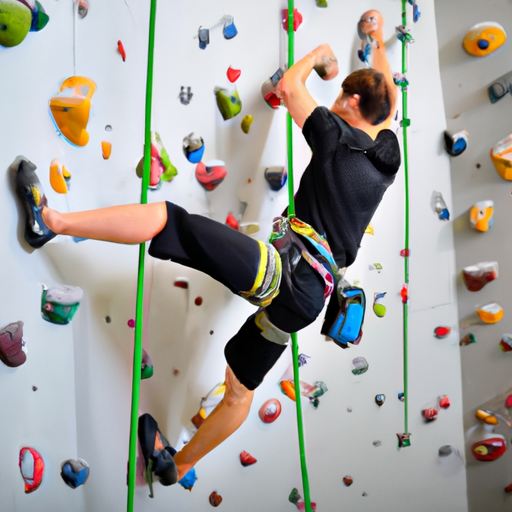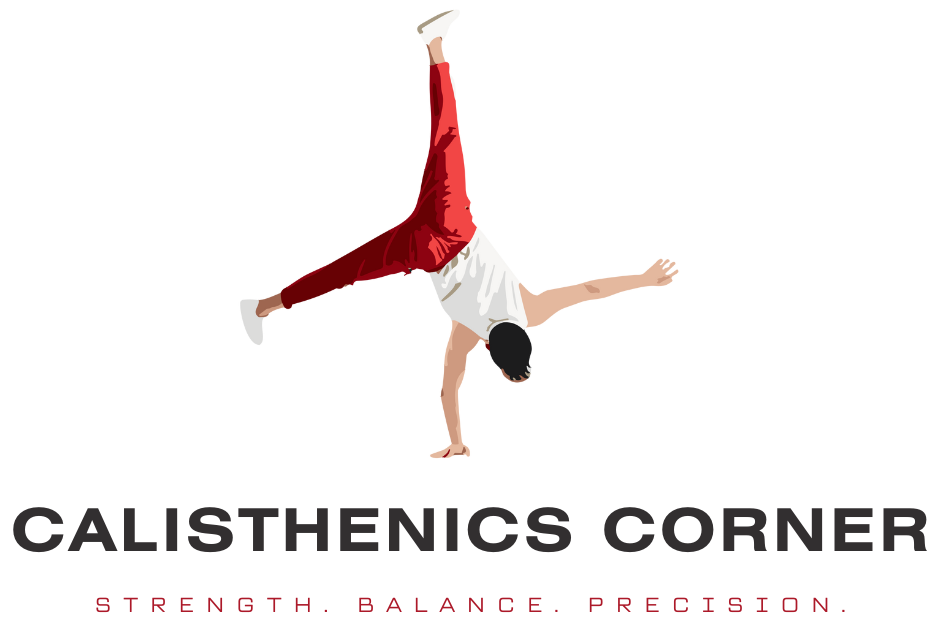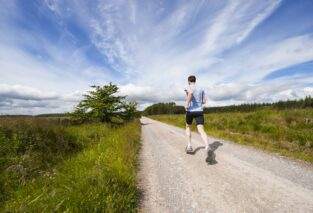If you’re a fitness enthusiast looking for a new challenge, you might have stumbled upon the exhilarating world of rock climbing. But is it more than just a thrilling adventure? In this article, we explore the intriguing question: Is Rock Climbing Calisthenics? Let’s take a closer look at the physical demands and benefits of this captivating sport and find out how it aligns with the principles of calisthenics. Get ready to discover the potential synergy between rock climbing and bodyweight training – it’s time to ascend to new heights of fitness!
What is Calisthenics?
Definition of Calisthenics
Calisthenics is a form of exercise that involves using only your body weight to perform a variety of movements and exercises. The word “calisthenics” is derived from the Greek words “kalos” and “sthenos,” which mean beauty and strength, respectively. This discipline focuses on improving strength, flexibility, and overall body control through movements such as push-ups, squats, lunges, and planks. It is a popular form of exercise that can be done anywhere, without the need for expensive equipment or gym memberships.
Key Principles of Calisthenics
There are several key principles that define calisthenics. Firstly, it emphasizes the use of body weight as resistance, rather than relying on external weights or machines. This makes it accessible to people of all fitness levels and allows for a greater range of movements. Secondly, calisthenics promotes functional movements that mimic real-life activities, helping to improve overall fitness and maintain mobility. Core strength and stability are also fundamental to calisthenics, as they form the foundation for many of the exercises. Finally, calisthenics encourages continuous progression and challenges through variations and advancements in exercises. This ensures that individuals can continually improve and adapt their training to their personal goals and abilities.
Benefits of Calisthenics
Calisthenics offers numerous benefits for both beginners and advanced fitness enthusiasts. Firstly, it enhances overall body strength and muscle tone. By performing a variety of bodyweight exercises, you engage multiple muscles simultaneously, leading to balanced and functional strength development. Secondly, calisthenics improves flexibility and mobility, as many exercises require a full range of motion. This can help prevent injuries and improve posture. Additionally, calisthenics is an excellent form of cardiovascular exercise, as it often involves high-intensity interval training (HIIT) and can increase heart rate and endurance. Finally, calisthenics is highly adaptable and scalable, meaning that it can be modified to suit individual fitness levels, making it suitable for people of all ages and abilities.
Rock Climbing Basics
Definition of Rock Climbing
Rock climbing is a sport that involves ascending steep or vertical rock formations using specialized techniques. It requires physical strength, mental focus, and technical skills. Climbers rely on their hands, feet, and other body parts to move up the rock face, using holds, cracks, and other features for support. Rock climbing can be practiced both indoors on artificial climbing walls and outdoors on natural rock formations. It is a challenging and exhilarating activity that combines physical fitness with problem-solving and mental resilience.
Types of Rock Climbing
There are various types of rock climbing, each with its own set of challenges and techniques. Bouldering involves climbing shorter routes, known as boulder problems, without the use of ropes or harnesses. It is typically done on large boulders or low-height rock formations, and the focus is on strength, balance, and technique. Sport climbing involves climbing longer routes with the use of ropes, harnesses, and pre-placed anchors for protection. Traditional climbing, also known as trad climbing, requires the climber to place and remove their own gear, such as cams and nuts, as they ascend the rock. It places a greater emphasis on technical skills and risk management. Finally, there is also free soloing, which is the most dangerous and challenging form of climbing as it involves climbing without any ropes or protective gear.
Equipment and Techniques
Rock climbing requires specific equipment to ensure safety and facilitate movement. The basic equipment includes climbing shoes, which provide grip and support on the rock surface, and a harness, which is used to attach oneself to the rope for protection against falls. Additionally, climbers use a helmet to protect their heads from falling rocks and other hazards. Other equipment may include ropes, carabiners, quickdraws, slings, and belay devices. Climbers also need to learn various techniques, such as proper footwork, handholds, body positioning, and route reading. Training in these techniques is essential to improve climbing efficiency and reduce the risk of injuries.
Similarities Between Rock Climbing and Calisthenics
Bodyweight Training
One of the key similarities between rock climbing and calisthenics is the emphasis on bodyweight training. Both activities require individuals to move and control their bodies without relying on external weights. In calisthenics, exercises such as push-ups, pull-ups, and dips all utilize body weight as resistance to build strength. Similarly, rock climbing relies solely on the climber’s body weight, as they use their hands, feet, and core muscles to navigate the rock face. This shared focus on bodyweight training makes both activities ideal for individuals who prefer functional and minimalistic workouts.
Muscle Development
Both rock climbing and calisthenics are effective in developing lean muscle mass and functional strength. In calisthenics, the compound movements and full-body exercises engage multiple muscle groups simultaneously, resulting in a balanced and all-around development. Push-ups, pull-ups, and squats, for example, work the chest, back, arms, and legs, creating a strong foundation for overall strength. Similarly, rock climbing engages the major muscle groups of the upper body, including the forearms, biceps, triceps, shoulders, and back. Climbers also rely on their leg muscles to generate power and stability. This shared emphasis on muscle development makes both activities ideal for those seeking an effective and efficient full-body workout.
Functional Strength
Both rock climbing and calisthenics promote functional strength, which is the ability to perform everyday tasks and sports activities with ease and efficiency. In calisthenics, the emphasis on bodyweight movements replicates the natural movements used in daily activities, such as pushing, pulling, squatting, and lunging. By strengthening these movement patterns, individuals can improve their overall physical performance and reduce the risk of injuries. Similarly, rock climbing requires a combination of upper body strength, core stability, and lower body power to overcome the challenges posed by the rock. This functional strength development translates well into other athletic pursuits and can improve overall body control and coordination.
Differences Between Rock Climbing and Calisthenics
Focus on Specific Muscle Groups
While both rock climbing and calisthenics engage multiple muscle groups, they differ in terms of the specific muscles targeted. In calisthenics, exercises can be modified and varied to focus on specific muscles or muscle groups. For example, one can perform close-grip push-ups to target the triceps or pull-ups with different grips to emphasize the biceps or back muscles. This level of specificity allows individuals to tailor their workouts based on their personal goals and needs. On the other hand, rock climbing primarily targets the muscles of the upper body, specifically the forearms, fingers, shoulders, and back, due to the repetitive gripping and pulling movements involved. While climbers also engage their leg muscles, the emphasis is often on upper body strength and endurance.
Cardiovascular Conditioning
Calisthenics, especially when performed with high intensity and in a circuit format, can provide a cardiovascular workout that elevates heart rate and improves endurance. The continuous movement between exercises and the use of large muscle groups in compound movements contribute to cardiovascular conditioning. In contrast, rock climbing, while physically demanding, is less focused on sustained cardiovascular effort. Climbers often experience intermittent periods of intense exertion followed by periods of rest or recovery as they plan their next move or rest on a hold. While climbing can increase heart rate and provide some cardiovascular benefits, it may not provide the same level of sustained cardiovascular conditioning as calisthenics.
Environmental Factors
One major difference between rock climbing and calisthenics is the environmental factor. Calisthenics can be performed indoors or outdoors, depending on personal preference and access to facilities. It provides a consistent and controlled environment for training, where factors such as weather or terrain are not a concern. Rock climbing, on the other hand, takes place in outdoor environments, which can vary greatly in terms of weather conditions, rock type, and accessibility. Climbers must adapt to different terrains, weather patterns, and potential hazards such as loose rocks or difficult climbing routes. While this adds an element of excitement and challenge to rock climbing, it also requires climbers to be prepared and adaptable to the ever-changing outdoor conditions.
Benefits of Rock Climbing as Calisthenics
Healthy Body Composition
Rock climbing, like calisthenics, can contribute to achieving and maintaining a healthy body composition. The repetitive pushing and pulling movements involved in climbing engage multiple muscle groups and increase overall muscle mass. This increase in lean muscle mass can help boost metabolism and promote fat loss. Additionally, rock climbing is a physically demanding activity that burns a significant amount of calories, leading to weight loss and improved overall body composition. By incorporating rock climbing into a calisthenics routine, individuals can enhance their body composition goals, such as increasing muscle definition and reducing body fat percentage.
Improved Grip Strength
Grip strength is essential for both rock climbing and calisthenics. In rock climbing, a strong grip is crucial for holding on to rock holds and maintaining stability while ascending. Regular climbing sessions can significantly improve grip strength, as climbers continuously challenge their hands, fingers, and forearms. This improved grip strength can also benefit calisthenics exercises, such as pull-ups and hanging leg raises, that require a strong grip to perform effectively. By incorporating rock climbing into a calisthenics routine, individuals can enhance their grip strength, leading to improved performance in various exercises and activities.
Enhanced Core Stability
Rock climbing places a significant demand on the core muscles, which are responsible for maintaining stability and control during climbing movements. The constant need to engage and stabilize the core muscles while maneuvering through different positions and holding on to the rock requires a strong and stable core. This enhanced core stability gained from rock climbing can benefit calisthenics exercises that require core engagement, such as planks and hollow holds. A strong core not only improves performance in calisthenics but also contributes to better posture, balance, and overall functional movement.
Drawbacks of Rock Climbing as Calisthenics
Limited Muscle Isolation
One drawback of using rock climbing as the sole form of calisthenics training is the limited ability to isolate specific muscle groups. Calisthenics exercises can be modified and targeted to focus on specific muscles or muscle groups, allowing for more effective muscle development and addressing any muscular imbalances. Rock climbing, while engaging multiple muscle groups simultaneously, does not provide the same level of muscle isolation. The compound movements involved in climbing primarily focus on the upper body muscles, making it more challenging to target specific muscle groups such as the legs or the abdominals.
Risk of Overuse Injuries
Rock climbing is a physically demanding activity that places significant stress on the joints, tendons, and ligaments of the hands, fingers, and upper body. Constant gripping, pulling, and repetitive movements can lead to overuse injuries such as tendonitis or strains. If rock climbing is the primary form of calisthenics training without adequate rest and recovery, the risk of overuse injuries may increase. It is essential to incorporate proper rest days and listen to the body’s signals to prevent injury. Additionally, proper warm-up exercises targeting the specific muscles and joints used in climbing can help reduce the risk of overuse injuries.
Time and Resource Requirements
Rock climbing requires specialized equipment, such as climbing shoes, harnesses, and ropes, which may incur initial costs. Access to climbing walls or outdoor climbing areas is also necessary. Compared to calisthenics, which can be performed with minimal equipment and in various locations, rock climbing may require more planning and investment. Additionally, climbing sessions may require more time and coordination, as they often involve travel to specific climbing spots or climbing gyms. This added time and resource requirement may be a limitation for individuals with busy schedules or limited access to climbing facilities.
Combining Rock Climbing with Calisthenics
Cross-Training Benefits
Combining rock climbing with calisthenics can provide significant cross-training benefits. By incorporating both activities into a training routine, individuals can develop a well-rounded fitness profile. Rock climbing challenges and strengthens specific muscle groups, such as the muscles of the forearms, fingers, and back, which can provide added strength and endurance for calisthenics exercises. Similarly, the functional movements and compound exercises of calisthenics can enhance overall body strength and stability, benefiting rock climbing technique and performance. The combination of these two activities can contribute to improved overall athleticism, versatility, and enjoyment of physical fitness.
Specific Calisthenics Exercises for Rock Climbing
Calisthenics exercises can be specifically tailored to target the muscles and movement patterns used in rock climbing. For example, incorporating exercises such as finger pull-ups or towel pull-ups can strengthen the finger and forearm muscles necessary for gripping holds. Hanging leg raises or knee raises can improve core stability, which is vital for maintaining balance and control while climbing. Pistol squats or step-ups can enhance lower body strength and power, contributing to efficient footwork and lower body stability. By incorporating these targeted calisthenics exercises into a rock climbing training routine, climbers can enhance their climbing performance and reduce the risk of injury.
Periodization and Skill Progression
Periodization refers to organizing training into specific phases or cycles, each with a specific focus, in order to optimize performance and progress. Implementing periodization principles in a combined rock climbing and calisthenics routine can help prevent plateauing and ensure continual improvement. For example, one phase may prioritize calisthenics exercises to build overall strength and stability, while another phase may focus on rock climbing technique and skill development. By structuring training in this way, individuals can avoid overtraining, maintain motivation, and maximize performance gains in both rock climbing and calisthenics.
Calisthenics Training for Rock Climbers
Assisting Climbing Performance
Calisthenics training can directly assist rock climbers in improving their climbing performance. Calisthenics exercises such as pull-ups, push-ups, and dips strengthen the upper body muscles necessary for gripping and pulling on the rock. Similarly, exercises targeting the core muscles, such as planks and hollow holds, improve stability and body control while climbing. By incorporating these calisthenics exercises into a rock climber’s training routine, climbers can improve their overall strength and endurance, leading to improved climbing performance and technique.
Targeting Weak Points
Calisthenics also allows rock climbers to specifically target their weak points and address any muscular imbalances. For example, if a climber struggles with grip strength, exercises such as finger pull-ups or grip hang holds can be incorporated to improve this area. If a climber lacks core stability, specific core exercises can be added to the routine to enhance overall body control. By focusing on individual weaknesses through targeted calisthenics exercises, climbers can strengthen specific areas and improve overall climbing performance.
Preventing Injuries
In addition to enhancing performance, calisthenics training can also help prevent injuries in rock climbers. By strengthening the muscles, tendons, and ligaments used in climbing, individuals can reduce the risk of overuse injuries and strains. Exercises that target the rotator cuff muscles, such as scapular retractions and external rotations, can help maintain shoulder stability and prevent common climbing injuries. Stretching and mobility exercises can also improve flexibility, reducing the risk of muscle imbalances and chronic tightness. By incorporating these injury prevention exercises into a rock climber’s training routine, climbers can stay healthy and continue enjoying their climbing pursuits.

Conclusion
Rock climbing and calisthenics are two distinct disciplines, each with its own unique benefits and challenges. While rock climbing primarily focuses on upper body strength, grip strength, and core stability, calisthenics offers a broader range of exercises that target specific muscles and movement patterns. Combining these two activities can provide a well-rounded fitness routine that enhances overall strength, agility, and performance. By recognizing the similarities and differences between rock climbing and calisthenics, individuals can design a training program that suits their goals and enhances their overall fitness journey. So grab your climbing shoes and get ready to challenge yourself both on and off the rock!








